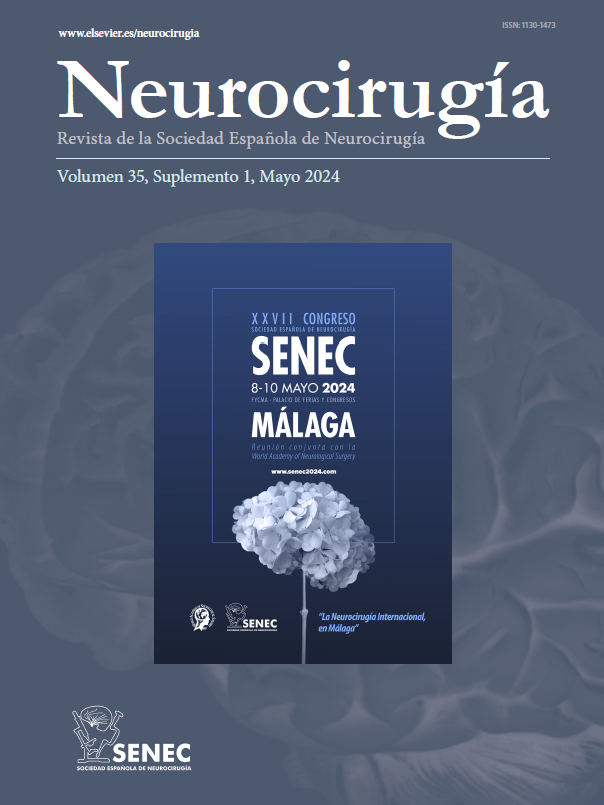P-128 - GIANT MASS FOLLOWING LATE-ONSET OF FOREIGN BODY REACTION TO CRANIOPLASTY
Hospital Universitario de Álava, Vitoria, Spain.
Introduction: Foreign body reactions to implanted materials in the skull following cranioplasty are nowadays a relatively uncommon event in neurosurgery. When present, they usually manifest at early stages following surgery.
Case report: A 77-year-old male presented with a large, superficial, right parietal mass, measuring 10 cm on its longest axis and protruding 3 cm from the skull surface. The lesion had been known for years but had significantly increased in size in the last few months and had become ulcerated. Medical history included severe enolic abuse, dementia, and epilepsy. He was currently institutionalized. The patient had suffered a traumatic subdural haematoma 33 years ago, that was surgically evacuated. He developed an infection at the surgical site and a craniectomy was subsequently performed. At a second stage, the skull defect was replaced with a plasty made of BOP (biocompatible osteoconductor polymer), a material proposed for osteosyntheses and for filling of bone defects in neurosurgery. A swab taken from the ulcer revealed active infection, and the patient was deemed candidate for surgical resection of the mass, along with maxillofacial surgery for reconstruction of the scalp defect. A wide, round incision around the lesion was marked. The scalp was elevated to reveal a large lesion invading subcutaneous tissue and periosteum. It stemmed from the previous cranioplasty, which had been replaced by a heterogeneous, granulomatous tissue which respected duramater. The adjacent skull was eroded but there was no obvious infiltration. The skin defect was covered with a vastus lateralis muscle graft. Pathology was reported as foreign body-type giant cell reaction.
Discussion: Late onset of foreign body reaction must be considered in the presence of an expanding mass at the site of a previous reconstruction with exogenous material. Development of more biocompatible materials used currently can prevent its prevalence in the future.







